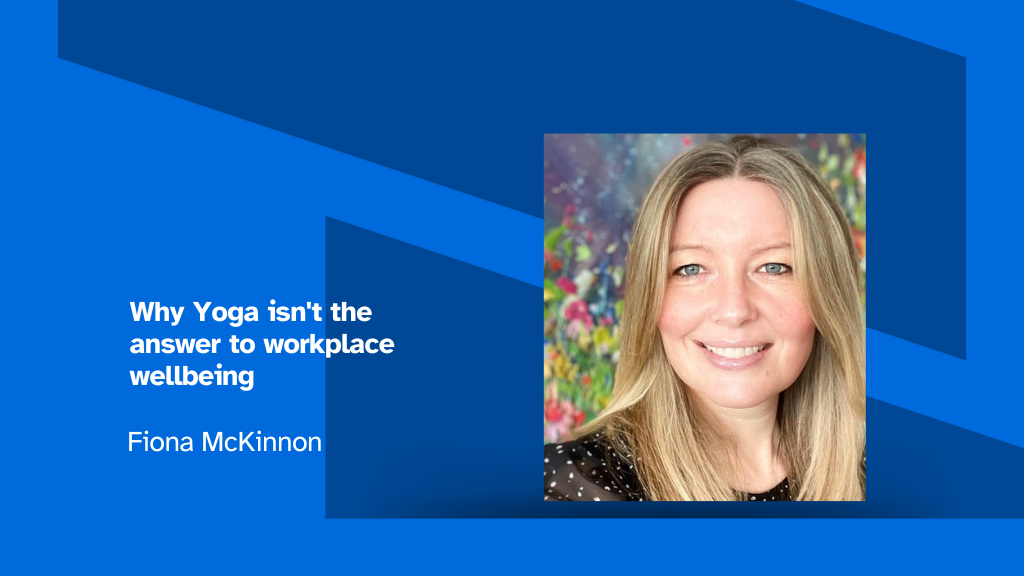By Fiona McKinnon; Workplace People & Performance Consultant, Leadership Coach. Founder of Performance & Wellbeing Consultancy MomentCo & COO at Keynes Digital.
In the quest for workplace wellbeing, never has there been a mystical cure-all activity that promises to alleviate stress, enhance productivity, and foster a zen-like office environment, like yoga. Companies everywhere are rolling out yoga mats in boardrooms, scheduling weekly sessions, and even building dedicated yoga spaces.
But let’s think about this… when was the last time you heard someone going through a tough time in a marriage say “We have booked an Ashtanga session on Saturday, it’s going to fix everything in 60 minutes” It’s like trying to mow the lawn with a washing machine, great devices on their own, but they have very different purposes!
So, let’s address the elephant in the room, and I don’t mean having to see colleagues in lycra: Yoga can feel exclusionary.
Not everyone feels comfortable straining their body into bow pose, or trying to relax in savasana knowing that they are running 5 minutes late for a meeting. While some may find tranquillity in down dog, others might find the whole experience anxiety-inducing, I know I used to! The implementation of yoga as a workplace wellbeing initiative lacks genuine consideration of employees’ diverse physical and mental wellbeing needs and limitations.
Let’s move on to the next elephant; yoga as a primary culture and wellbeing solution, does absolutely nothing to address the root causes of workplace stress. In fact, I am going to suggest that rolling out mats in the boardroom can be a demotivating, even antagonistic gesture for team members who are on the way to burnout due to poor communication or management behaviour. No amount of sun salutations will rectify a toxic work culture or a chronically underperforming team.
I am not taking away from the personally felt benefits of yoga (I now love it!), however, there is no evidence that the benefits of group sessions translate effectively into workplace culture. The expectation that employees will emerge from stretching to feel completely trained, valued and ready to tackle their tasks, all singing kumbaya together is not just unrealistic, it is wellbeing washing at its worst.
When companies introduce yoga classes without tackling these underlying problems, they risk appearing performative, offering the illusion of care instead of meaningful change.
It can sound daunting to try to take on culture in one bite, however, our research highlights some simple truths; people want to work in an environment where they feel valued, heard, and supported. This means that a small amount of well-intended, well-planned, genuine action, goes a very long way.
So, the solution lies not in Vinyasa but in creating a ‘performance and people’ care framework that includes opportunities for professional development, clear communication styles and channels, leadership training, transparency and alignment of goals and objectives. There is no 60-minute silver bullet; start small, be transparent, learn, iterate – and if you don’t have the time or expertise, get help – this need not be expensive or time-consuming, but will leave a more meaningful impact that lasts off a mat.









